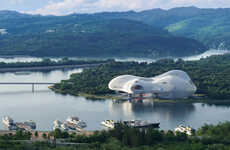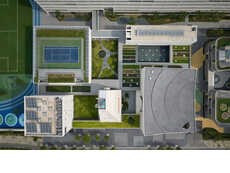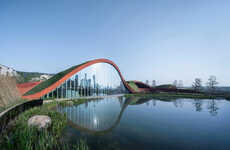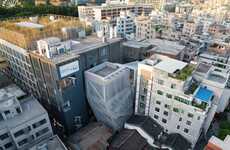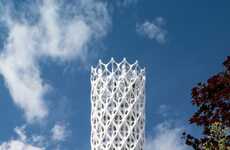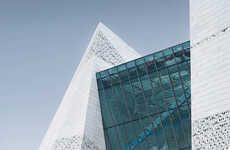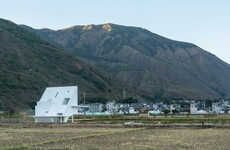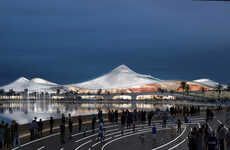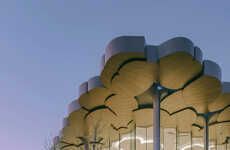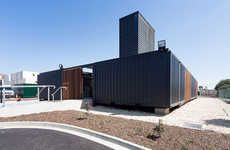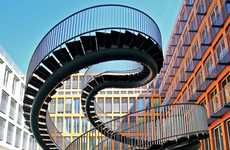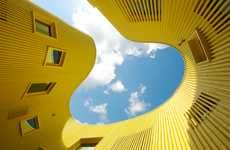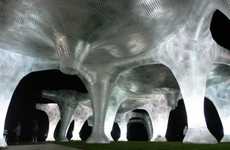Liu Chien-Sheng's Pushkinsky Cinema Makes Gas a Building Component
Amelia Roblin — December 11, 2011 — Art & Design
References: www2.dupont & suckerpunchdaily
If you think about the elements that construct a piece of architecture, it is quite likely that your list will include materials in solid states. Liu Chien-Sheng's Pushkinsky Cinema Hall suggests that gasses would enhance the appearance and experience of buildings, demonstrating the effect through this Changing the Face competition entry.
Planned for Pushkin Square in Moscow, Russia, this Chinese proposal strives to communicate structural poetry. The great theater would rest on the urban green line, adjacent to a statue of Alexander Sergeyevich Pushkin with the added purpose of referencing the monument, the man and his memory.
The concepts of freedom, warmth and inspiration are expressed in Liu Chien-Sheng's Pushkinsky Cinema Hall through an abstract design that resembles a fire's burning embers. Steam rises up the sides of the building to turn the thermochromic metal cladding red, keep the interior toasty and create the appearance of an impossibly protean edifice.
Planned for Pushkin Square in Moscow, Russia, this Chinese proposal strives to communicate structural poetry. The great theater would rest on the urban green line, adjacent to a statue of Alexander Sergeyevich Pushkin with the added purpose of referencing the monument, the man and his memory.
The concepts of freedom, warmth and inspiration are expressed in Liu Chien-Sheng's Pushkinsky Cinema Hall through an abstract design that resembles a fire's burning embers. Steam rises up the sides of the building to turn the thermochromic metal cladding red, keep the interior toasty and create the appearance of an impossibly protean edifice.
Trend Themes
1. Gas-fueled Architecture - The use of gasses in architecture can bring about a new level of innovation and creativity in building design, creating endless possibilities.
2. Thermochromic Cladding - The use of thermochromic materials in building construction can bring a new level of dynamism and interaction for building occupants and passersby.
3. Abstract Structural Poetry - The creation of abstract building designs that incorporate elements of poetry and storytelling can add a new level of emotional connection for building occupants and communities.
Industry Implications
1. Architecture - Incorporating new and unique materials, such as gasses and thermochromic materials, into building design presents opportunities for architects to push the boundaries of traditional construction and create something truly disruptive.
2. Building Materials Manufacturing - The development and manufacture of innovative materials such as thermochromic cladding presents new opportunities for building materials manufacturers to differentiate themselves and create new revenue streams.
3. Urban Planning - The incorporation of creative and emotionally impactful building designs, such as those incorporating elements of poetry and storytelling, into urban planning can enhance the overall aesthetic and livability of cities and communities.
3.8
Score
Popularity
Activity
Freshness
